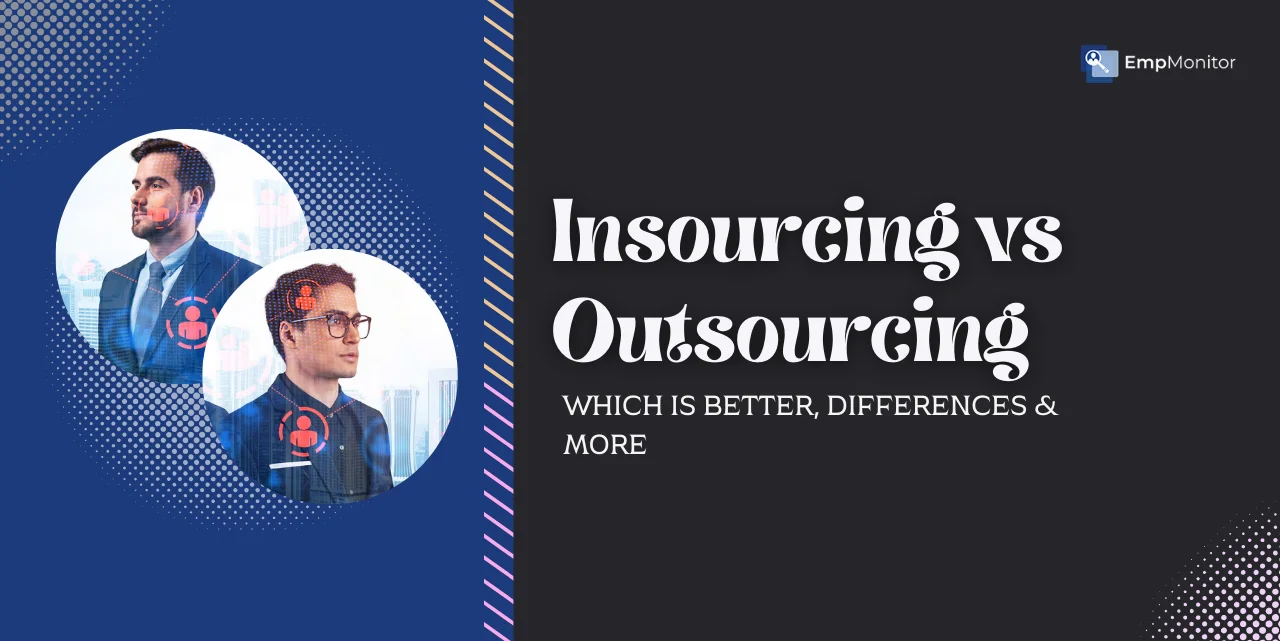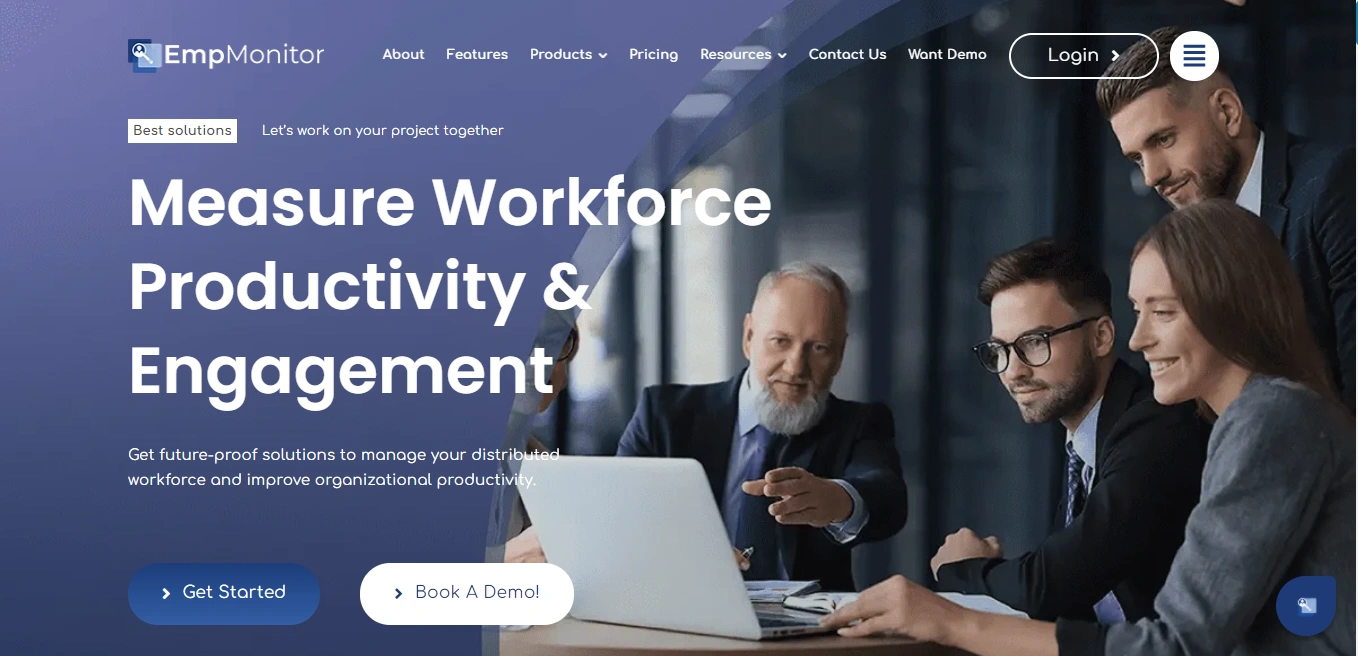Are you also struggling to scale your team without losing control or overspending? The insourcing vs outsourcing debate is more relevant than ever. Senior leaders face constant pressure to boost efficiency, reduce costs, and deliver results—often with limited resources. Choosing the wrong model can lead to poor quality, missed deadlines, or internal burnout.
This blog will walk you through the core differences between insourcing and outsourcing, helping you avoid costly mistakes. We’ll explore the pros and cons, and when each strategy makes sense for your business. Whether managing rapid growth or tightening budgets, these insights will help you make smarter, faster decisions that align with your long-term goals. Don’t let the wrong hiring strategy slow you down—find the right fit today.
In A Hurry? Listen To The Blog Instead!
Insourcing Vs Outsourcing: Understanding The Definitions
Choosing between insource vs outsource is a strategic decision that impacts productivity, cost-efficiency, and control. Understanding both concepts is essential for business leaders aiming to streamline operations.
What Is Insourcing?
Insourcing means assigning tasks and responsibilities to your internal team rather than hiring external vendors. This method allows companies to capitalize on their in-house talent, systems, and facilities. It helps keep projects aligned with the company’s values and objectives by using the team’s existing knowledge and encouraging collaboration among internal staff.
Companies commonly use insourcing for manufacturing, R&D, marketing, and customer support. It is especially effective when close oversight and a deep understanding of internal processes are required.
Insourcing vs outsourcing decisions often come down to control and customization.
Defining Insourcing
Insourcing is handing over specific projects or operations to internal departments or teams. Instead of outsourcing tasks to a third party, companies rely on their existing workforce to execute them. It offers more visibility into day-to-day activities and tighter control over outcomes.
The benefits go beyond just supervision.
Insourcing reduces recruitment and training expenses by maximizing current employee capabilities. It also nurtures a consistent work culture, encouraging collaboration among teams that understand the organization’s mission.
By fostering internal accountability and innovation, insourcing ensures solutions align with company-specific needs and long-term objectives.
Insourcing vs outsourcing discussions should always consider the importance of internal culture and team dynamics strategies.
What Is Outsourcing?
Outsourcing is the process of contracting third-party providers to handle specific business functions. These tasks include payroll, IT services, customer support, marketing, or large-scale production. Businesses often choose to outsource to reduce operational load and access external expertise.
Before selecting an outsourcing partner, businesses must assess the provider’s reliability, compliance practices, and data security protocols. It is especially critical when working with confidential or sensitive information, where tools like employee monitoring software become essential.
Outsourcing helps companies reduce costs, improve turnaround time, and focus on strategic priorities.
The insourcing vs outsourcing often depends on the type of task and the resources available internally.
Defining Outsourcing
Outsourcing refers to hiring an external party to manage specific processes or projects. It provides access to specialized skills and technology that may not exist within the company. Outsourcing partners typically bring experience and scale, allowing faster execution and higher efficiency. There are many outsourcing examples across industries, from IT and customer service to accounting and digital marketing, demonstrating how businesses can offload non-core functions for better results.
One major benefit of outsourcing is saving money—especially when hiring services from places with lower wages or more efficient systems. It also helps businesses grow or shrink their operations quickly, depending on their requirement.
By outsourcing non-core functions, companies can focus more on strategic growth and innovation.
Understanding insourcing vs outsourcing helps leaders make informed decisions that support agility, performance, and long-term success.
What Are The Differences Between Insourcing Vs Outsourcing?
Understanding the differences between insourcing vs outsourcing is essential for leaders making strategic decisions. These approaches serve the same purpose—getting the job done—but with different methods and impacts. While both options can be cost-effective depending on your needs, the right choice depends on your goals, internal resources, and long-term plans.
Cost Considerations
Cost savings often drive this decision. With insourcing, you may avoid third-party fees, but you might need to invest in tools, systems, or even talent you don’t currently have.
On the other hand, outsourcing gives you access to skilled professionals without the burden of recruitment, training, or buying high-cost equipment you rarely use. It can result in significant savings—especially for short-term or specialized tasks.
When analyzing insourcing vs outsourcing, cost isn’t just about money. It is also about time and resource allocation.
Control Over Quality & Workflow
Insourcing gives you tighter control. You can supervise tasks in real-time, offer feedback, and quickly make changes. It leads to a better grasp of quality and team productivity. Leveraging employee monitoring software like EmpMonitor can enhance this further by offering transparency into performance metrics and workflows.
In contrast, outsourcing shifts control to an external provider. You set expectations and deliverables, but the methods and pace of work are usually beyond your reach. It can lead to less flexibility and fewer opportunities to improve mid-project.
Quality control is crucial in evaluating insourcing vs outsourcing, especially when brand reputation is on the line.
EmpMonitor- Advanced Workforce Management Software
EmpMonitor is a comprehensive employee monitoring and productivity management software designed to help businesses enhance operational efficiency, ensure data security, and manage remote or hybrid teams.
Key Features of EmpMonitor
- Real-Time Activity Monitoring: EmpMonitor tracks employee activities in real-time, including application usage, websites visited, and time spent on tasks. This feature provides managers with insights into employee productivity and work patterns.
- Automated Screenshots: The software captures screenshots at regular intervals, allowing supervisors to review work progress and ensure compliance with company policies.
- Time & Attendance Tracking: EmpMonitor records login and logout times, active and idle hours, and generates detailed timesheets, facilitating accurate attendance management.
- User Activity Monitoring: This employee monitoring software monitors keystrokes, mouse movements, and other user interactions to provide a comprehensive view of employee engagement and identify potential areas of concern.
- Data Security & Privacy Compliance: EmpMonitor employs encrypted technology to protect sensitive information and adheres to privacy standards, balancing employee monitoring with data security.
- Comprehensive Reporting: It generates detailed reports and analytics on employee performance, helping managers make informed decisions and identify top performers.
- Project & Task Management: The software includes tools for assigning tasks, tracking project progress, and managing workloads, streamlining project management processes.
Handling Supporting Functions
Outsourcing is often used for handling repetitive or support functions like payroll, data entry, or customer support. It allows your core team to focus on growth-driving strategies. Insourcing these tasks might give you more control but can lead to stretched resources and added overhead.
When considering outsourcing versus insourcing, assess where your team adds the most value and what tasks can be handled more efficiently by others.
Innovation & Problem Solving
When teams work in-house, they have end-to-end visibility of projects. It creates room for innovation. They notice problems early, explore unique solutions and align everything with company goals. Outsourcing may reduce this agility. You might not even see a problem until it impacts the final deliverable.
Innovation thrives in an environment of constant feedback and involvement—one of the key strengths in the insourcing vs outsourcing debate.
Risk of Miscommunication
Outsourcing can bring communication challenges—especially across time zones or tech barriers. Simple messages may get lost, delayed, or misunderstood. Insourcing minimizes that. Internal teams are easier to reach, and issues are resolved quickly through direct communication.
While both models have their place, clear communication is a key point of comparison between insourcing vs outsourcing.
Impact on Brand Value
Insourcing builds a stronger connection with local customers. It supports community employment and promotes a brand image that values local talent. You can also address customer concerns faster with an in-house team. Outsourcing might appear cost-cutting, affecting how customers perceive your brand—especially if service delays or quality issues arise.
When weighing insourcing vs outsourcing, consider how each option aligns with your brand’s values and public image.
Timeline & Project Speed
Insourcing allows for quicker turnarounds. With in-house resources and an on-site manager, aligning strategies and adhering to hybrid work schedules becomes easier.
Outsourcing can introduce additional coordination challenges that may delay progress, especially when teams are distributed across different regions.
Meeting deadlines consistently is a vital aspect of choosing between insourcing vs outsourcing.
Access To Global Talent
Outsourcing opens doors to a larger talent pool. You can bring in niche expertise from anywhere in the world. It is ideal for specialized or short-term projects. However, insourcing relies on the local talent market, which may limit your capabilities or slow down innovation.
In the outsourcing vs insourcing comparison, global reach is often a key advantage of outsourcing.
Read More
9 Proven Strategies For Better Team Dynamics
Insourcing vs Outsourcing: Advantages & Disadvantages
Understanding the difference between insourcing vs outsourcing is crucial when deciding how to allocate company resources effectively. Each approach brings unique benefits and limitations that can significantly impact operational efficiency, cost, and innovation.
Advantages of Insourcing with Internal Employees
Insourcing empowers organizations by keeping control within the company. One of the crucial benefits of insourcing is complete oversight. Companies can directly manage operations, ensuring quality standards remain high and align with business goals.
It also enhances communication. In-house teams often make faster decisions due to streamlined discussions, shared values, and closer department collaboration. It accelerates workflows and supports real-time adjustments to meet project needs.
Internal teams understand the business better. They build tailored solutions based on deep company knowledge. This alignment creates practical strategies that adapt quickly to evolving requirements. Another benefit includes long-term cost efficiency.
While initial investments may be high, companies avoid hidden vendor charges and protect their intellectual property. These factors contribute to the insourcing pros and cons evaluation.
One more thing to note—when you keep sensitive operations internal, you reduce the risk of data exposure. It is especially vital in industries that rely on proprietary information for a competitive edge.
Insourcing vs outsourcing becomes a key consideration when noticing business continuity and control.
Disadvantages of Insourcing
Despite its strengths, insourcing comes with clear challenges. One of the most noticeable disadvantages of insourcing is the higher upfront investment. Companies must spend on infrastructure, training, and hiring suitable talent to execute tasks effectively.
There’s also a skills limitation. Internal teams might not possess the expertise required for specific projects. It can stall innovation and affect output quality, especially in fast-changing industries. That’s one of the key pros and cons of insourcing.
Insourcing may also affect productivity if employees aren’t ready to take on new responsibilities. Training takes time. During this phase, output may dip, affecting project momentum. The risk of failure increases if the team lacks experience and doesn’t meet expectations. Deadlines may slip, and results may fall short.
In many cases, the debate between insourcing vs outsourcing centers around resource availability and operational scale.
The Advantages of Outsourcing
Outsourcing offers strategic benefits, particularly when scaling quickly or cutting costs. One crucial advantage is access to skilled professionals across the globe. This access boosts efficiency and allows for quicker project completion. The result? Faster time-to-market and agile response to business demands.
Outsourcing also helps reduce operational expenses. Partnering with external vendors in cost-effective regions saves money without compromising expertise. It is especially valuable for short-term or specialized projects.
It spreads the risk too. With reliable outsourcing partners, businesses can share project risks and reduce pressure on internal teams. Their expertise helps spot roadblocks early and prevent delays. These collaborative efforts often inspire new ideas and streamline business processes.
In the outsourcing vs insourcing debate, cost-effectiveness and access to diverse talent often make outsourcing the more scalable option.
Disadvantages of Outsourcing
However, outsourcing isn’t without drawbacks. The most common issue is reduced control. When someone outside the company handles the work, it becomes difficult to keep track of what’s happening every day or make fast changes when needed. It can result in outcomes that don’t align perfectly with your objectives.
Quality control can also become an issue. Differences in work ethics, time zones, and standards may affect project deliverables. It takes extra coordination to maintain consistency and avoid rework.
Communication challenges are common, especially across borders. Language barriers or cultural differences can cause misunderstandings that impact results. These gaps slow down progress and create inefficiencies.
Finally, outsourcing creates vendor dependency. Your business operations may suffer if your external partner underperforms or exits the market. Having contingency plans becomes essential to reduce risk.
Ultimately, understanding the insourcing vs outsourcing framework helps business leaders make informed choices. Weighing these options carefully can ensure long-term growth, sustainable performance, and competitive advantage.
Insourcing vs Outsourcing: Find Out Which Is Better?
Choosing between insourcing and outsourcing depends on your business goals, available resources, and the nature of the work. Insourcing offers more control, better collaboration, and tailored solutions but may involve higher costs and limited expertise. Outsourcing, on the other hand, brings cost savings, speed, and access to global talent but can affect quality control and flexibility.
Understanding the pros and cons of insourcing and outsourcing helps leaders make strategic decisions. Evaluate what aligns best with your long-term objectives. Whether you prioritize control or cost efficiency, ensure your approach supports growth and productivity.
If you’re ready to streamline operations and need a reliable solution, explore how our services can support your goals. Let’s help you navigate the right balance in insourced vs outsourced.
Frequently Asked Questions
Q: What is an example of insourcing?
An example of insourcing is when a company decides to build its software development team rather than hiring an external agency or freelance developers. By keeping the development work in-house, the organization gains more control over the project, ensures better alignment with its goals, and maintains tighter security over sensitive data. This approach also allows for faster communication and collaboration within the team.
Q: What company is InSource?
InSource is a well-established company that offers cloud-based technology solutions and helps businesses find skilled IT professionals. They support organizations by delivering advanced digital tools, improving workflows, and helping companies hire the right tech talent for their specific needs. InSource focuses on enhancing business performance through modern tech services and strategic staffing solutions.
Q: Why is insourcing good?
Insourcing empowers your internal teams with the right tools and processes to get their work done efficiently. It also ensures that all sensitive data and information stays within your organization’s servers, reducing the risk of data breaches and improving overall security.















